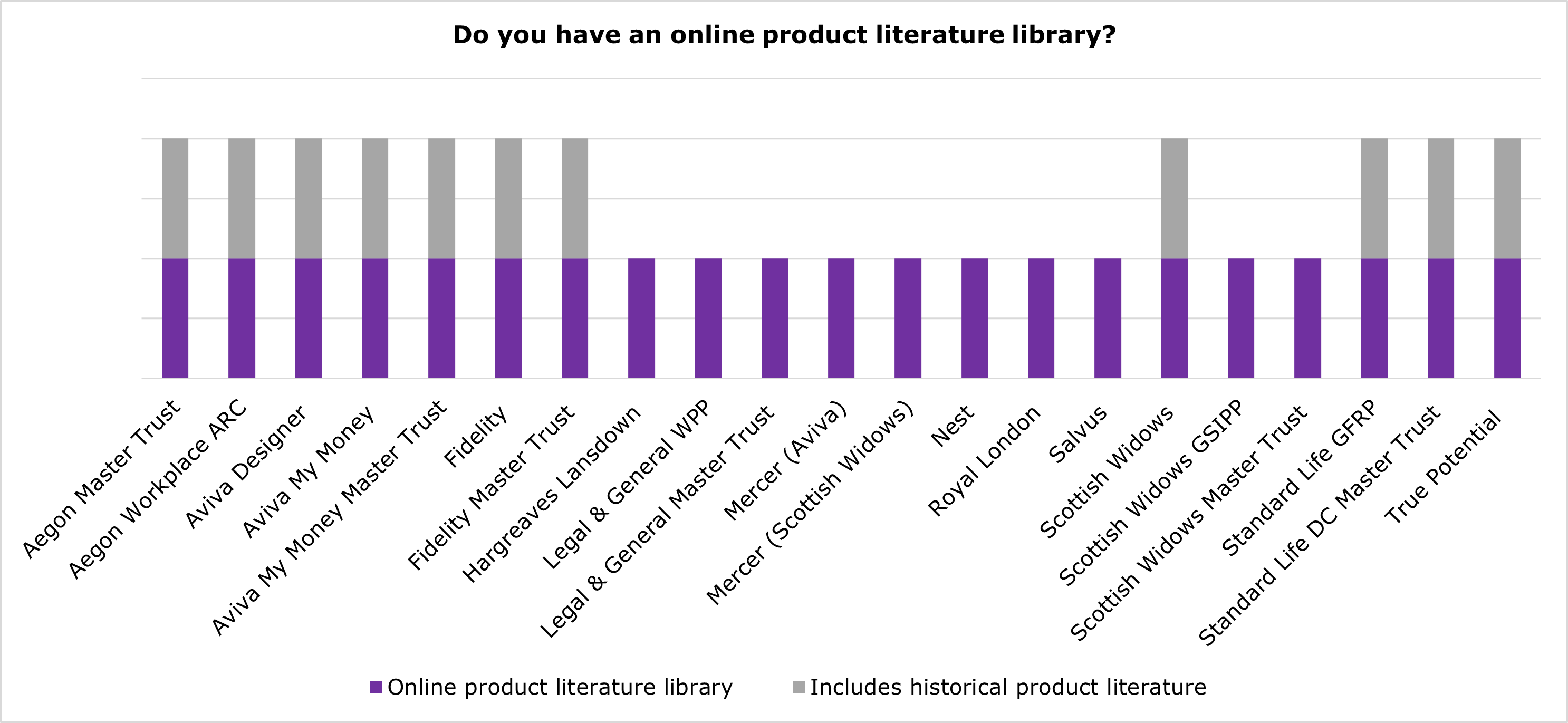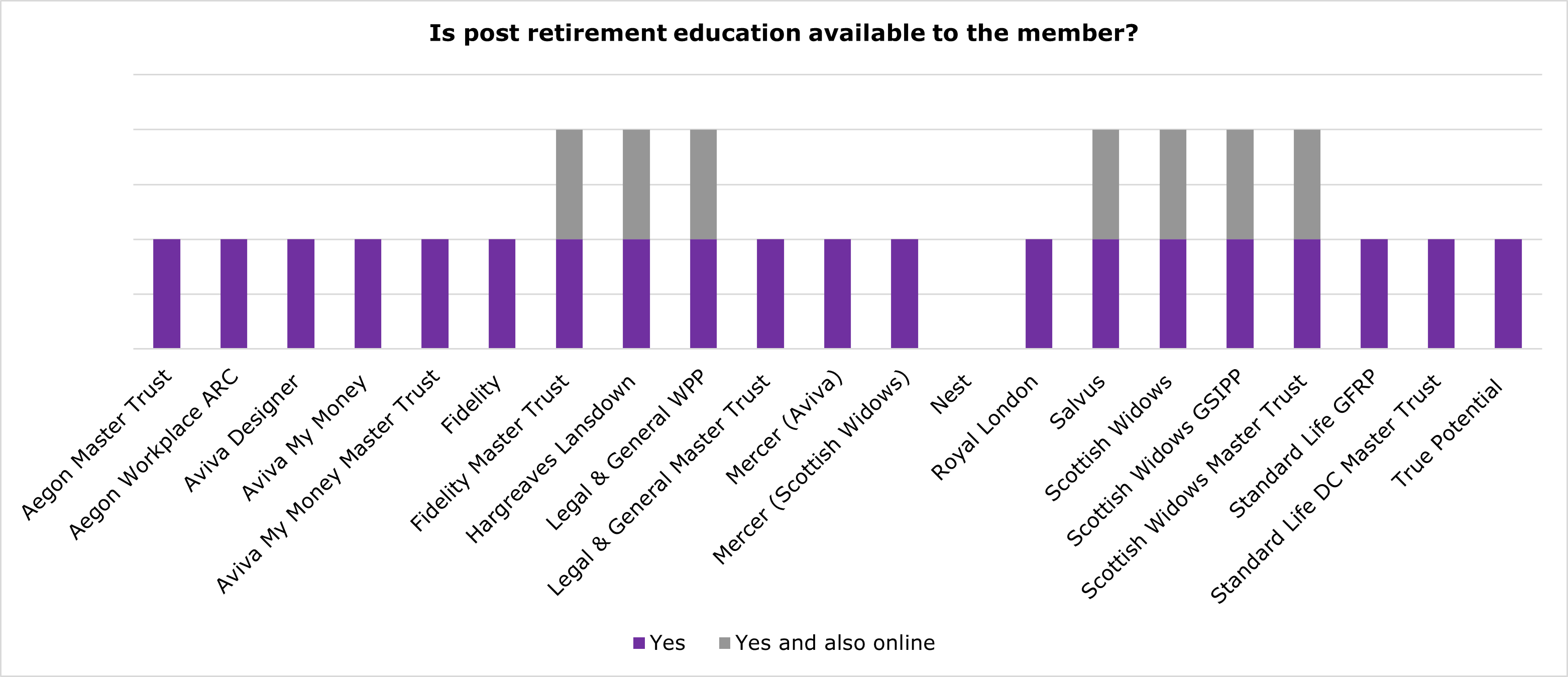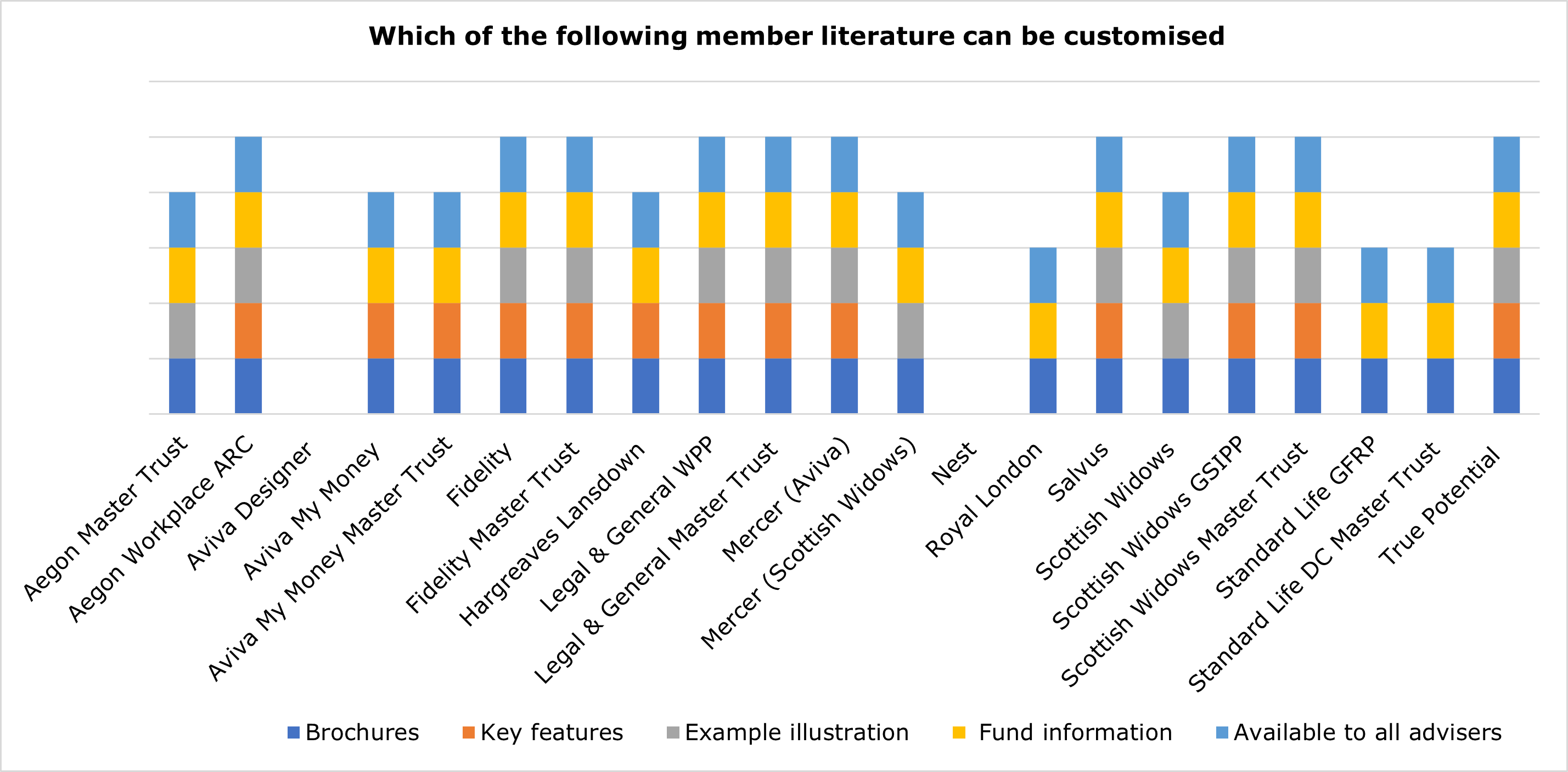Clear and concise communication of benefits packages to the workforce is in an important part of the role of HR, and workplace pensions are no exception. This insight explores what workplace pension providers are offering in terms of worksite communication materials to help their members.
When first starting a new role, workers can be overwhelmed by the quantity of information they are presented with at their original settle-in briefings. Therefore, take-away literature about key workplace policies and benefits for the employee to review at their own leisure is key.
Our data shows that all workplace pension providers, except for one, help with that by offering some form of workplace literature for its members. This is typically in the form of generic literature about the pension scheme and what your employer is providing for you. It was encouraging to see that for all providers this content has now moved online and can be requested by employers and their workers electronically.
NEST is the only provider which does not offer any kind of literature for worksite communication as standard which is somewhat surprising given the number of schemes they look after. NEST was established by the Government following the introduction of auto-enrolment to ensure that every employer can have access to a workplace pension scheme that meets auto-enrolment needs. It was designed to be an affordable product to enable employers, that may not be able to afford to do so otherwise, to offer pensions to their workers.
Among the various literature and aids available, post retirement educational material is available to the members of the majority of workplace pension schemes. Our data shows that only NEST does not offer this in some form. For Fidelity, Hargreaves Lansdown, Salvus and Scottish Widows this information is also available online.
All providers, including NEST, have an online product literature library employers can go on to find what they need. However, only just over half (52%) hold historical product literature in this library.

Our data also shows that 86% of workplace pension providers provide access to their sales aids online. These include traditional sales literature, communications and process materials, retirement guides, video’s and technical support papers.
Customisation of literature by financial services providers has grown increasingly common over the past decade. Many employers and advisers like to provide literature and important information from the provider branded as their own. So called ‘white-labelling’ is now offered on some level by most providers.
Our data shows that 81% of workplace pension providers offer some form of white labelling for individual schemes dependent on meeting business criteria. This is usually based on the size of the scheme.
Literature that can be customised includes brochures (90%), key features (62%), example illustrations (62%), and fund information (90%).
The providers who do not offer any form of literature customisation are Aviva Designer and NEST.
In terms of how they go about customising literature, providers use a mix of standard templates and bespoke facilities. For 90% of workplace pension providers a member literature customisation service is available to all advisers.
Our data shows that 81% of providers can also customise the literature to reflect adviser specific terms. Aegon Workplace ARC use a standard template for this. Hargreaves Lansdown offer a bespoke facility. The remainder of the providers who offer this do so using both standard templates and a bespoke facility.
Overall, most providers are able to provide a wide range of workplace literature and communications. It is encouraging to see that for most this is available online and can be white labelled or customised.









